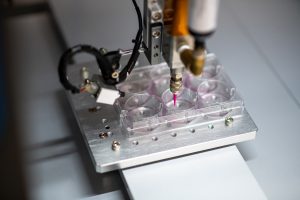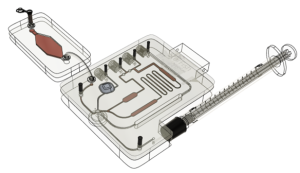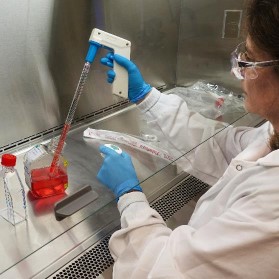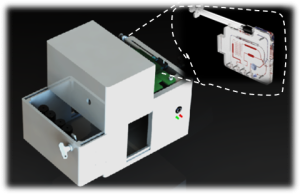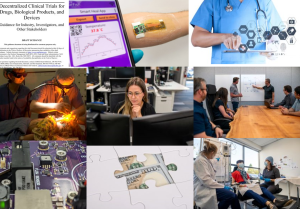 This year’s list of most read StarFish Medical blogs features the 10 most read blogs written in 2023 and the 10 most read employee written blogs during 2023 including some from back in 2014.
This year’s list of most read StarFish Medical blogs features the 10 most read blogs written in 2023 and the 10 most read employee written blogs during 2023 including some from back in 2014.
Our new blogs include expertise and insights from three new authors, two group blogs and five articles from blogging veterans. Topics range from Quality Assurance and Regulatory Affairs to trends that are revolutionizing medical devices.
New Medical Device Blogs
The FDA requires a UDI in both plain text and machine-readable format (i.e., bar code) to be printed on a label that is attached to the device and the device packaging for traceability through distribution and service life of the device. Eddie Yeung shares how medical device manufacturers/ device labelers can be confident that their UDI labels meet industry standards and eliminate the risk of losing identification and traceability on their devices.
Choosing a medical device contractor is one of the most important decisions a medical device start-up can make. This group blog explains why in a distributed workforce environment, finding a medical device development partner that will enable collaboration and innovation without actually physically being together is possible if you know what questions to ask.
Frequently in the medical device industry, the tangible importance of the aesthetic design of an object can be downplayed. It can be considered dressing or fluff and not important in the development of the device. Mike Loveless shows why aesthetic personality, visual rhetoric or emotional interaction with a medical device influence the experience that an operator and a patient have with the device.
Chronic non-healing wounds cause a significant burden on the healthcare system and are the leading cause of limb amputation. Khaled Youssef examines why integrating smart bandages within the healthcare system can reduce hospitalization rates and in-clinic wound treatment time, hence reducing the overall burden on the healthcare system.
Optical imaging tools can enhance the crucial role of biomedical imaging in accurately identifying diseases and monitoring their progression. Conventional medical imaging devices such as X-rays, computed tomography (CT), magnetic resonance imaging (MRI), ultrasound, and positron emission tomography (PET) are commonly used in clinical settings. Tammy Lee explains how these imaging modalities are limited in their resolution, only being able to capture images at the millimeter scale or greater. She then covers Optical Imaging techniques that are revolutionizing medtech.
6. How to Leverage PCB Mounted Microfluidic Cartridge Components
Microfluidic point-of-care assays are a hot topic nowadays and there’s lots of buzz surrounding how to make inexpensive, quick and reliable cartridges. Kenneth MacCallum discusses one area that gets less focus. In this blog he shares how to design the actuation and quantification mechanisms within the instrument or reader.
We began returning to office in late 2022 and continue developing new work practices, adjusting to new renovations, and bonding with colleagues added during our months of remote working. This group blog offers tips and insights from StarFish Medical employees from their experiences transitioning to working in the office or hybrid working.
Medical device projects generally have an S-Curve Model curve for costs. Low at the beginning, rising steeply in the middle and then flattening out towards completion. To manage costs, Helen Simons explains why effort should always be put into the early stages of a project (or product development) to ensure that the project is as well defined as possible. This allows the team to understand and know the costs up front and then manage those costs through scope management.
There are numerous light-hazard classification standards that may pertain to your medical device: ISO 60601-2-57, IEC 62471, ANSI RP-27-20, ISO 15004-2, ANSI Z80.36, ISO 10936-2, ISO 10939, and so on…In this blog post, Brian King examines certain commonalities and points of potential confusion of the “big 4” incoherent-light-source safety standards: IEC 62471 and ANSI RP-27-20 for “general biophotonic hazards”, and ISO 15004-2 and ANSI Z80.36 for hazards specific to ophthalmic devices and the patients to which they are applied.
The U.S. Food and Drug Administration (FDA) made a significant stride in clinical research on May 2, 2023, when it unveiled a draft guidance document entitled “Decentralized Clinical Trials for Drugs, Biological Products, and Devices.” Alexandra Reid examines the Draft Guidance that offers a detailed perspective on how to craft and actualize Decentralized Clinical Trials (DCTs) where some or all of the trial-related undertakings take place outside the traditional clinical trial sites.
Top 10 Evergreen Medical Device Blogs in 2023
Now on to our evergreen, most popular blogs in 2023. These blogs were written as early as 2014, but their topics and insights remain relevant today. Six of the blogs cover regulatory topics and three blogs have been updated with new information and a link to the original material.
The Conformité Européenne (CE) mark is a common sight on products in North America, and Europe. However, the China Export mark and CE mark are easily confused. Given the vast difference in the meaning of these symbols, engineers need to be able to tell them apart. In this blog Electrical Engineer, Ashwin Sira, explains the meaning of both marks and provides a simple way to differentiate them.
Companies manufacturing equipment or consumer parts that use hazardous materials in the manufacturing process must comply with RoHS and REACH environment regulations. Taimoor Khan discusses the importance of knowing which vendors are compliant.
The list of standards that apply to the development of medical devices is extensive – and for good reason. In this blog Bjarne Hansen looks at one of the more important ones —IEC 60601-1— and explains each of its 16 sections.
Selecting a method for developing an assay depends on the intended application and your target market. For instance, there are a variety of methods for detecting E. coli including PCR, gold nanoparticles, and fluorescent labelled enzymes – but it helps to know which to use when. In this blog Azra Raswani discusses these detection methods and the applications for which they are best suited.
Although there are several methods of demodulation in ultrasound, two ultrasound signal processing techniques are used predominately nowadays. Kenneth MacCallum, PEng, offers the pros and cons of both methods and concurs they will both likely be used for the foreseeable future.
ALARP (As Low As Reasonably Practicable) to AFAP (As Far As Possible) and medical device risk management has always been a tricky one. The nature of the products, their intended use, and the markets in which they are sold influences the approaches in controlling risk. When it comes to risk, the first thing to consider is the ISO 14971 standard. MDR and IVDR changes bring a new alignment in terms of risk. This blog is a 2022 update and links to the original written by Vincent Crabtree, PhD.
As embedded firmware becomes increasingly complex – especially with the proliferation of connected medical devices – unit testing could be the solution to quality control and device reliability. In this article Peter Kasakoff debunks three common myths about unit testing firmware and offers some advice for doing it right.
The Restriction of Hazardous Substances (RoHS) has had a substantial and permanent effect on the materials that go into many of the electronic products we make. Nigel Syrotuck updated his original blog in late 2020 and explains how knowing what to look for and finding good vendors with appropriate quality programs will lead to a smoother product development program and faster time to market.
Selecting the right sterilization process for a medical device requires consideration at an early stage in development as characteristics like geometry, material composition, and construction all factor into the decision. Senior Systems Engineer, Julian Grove, provides an interesting case study about selecting the right sterilization process for a new disposable device and how gamma irradiation won out.
Medical Device Drop Test and Push Test are part of IEC 60601-1. This 2014 blog by Nigel Syrotuck describes these two most common mechanical tests that medical device designers may want to perform in-house before sending a device for third party testing. The blog includes two videos featuring Nigel performing the tests.
We hope you enjoyed and found value in our most read medical device blogs in. Don’t Miss Out! Join over 6000 medical device professionals who receive our engineering, regulatory and commercialization insights and tips every month. Sign up for our monthly newsletter featuring four exclusive medical device development blogs along with webinars, white papers and events.
Image Credits: see individual blogs
Astero StarFish is the attributed author of StarFish Medical team blogs. We value teamwork and collaborate on all of our medical device development projects.
[embedded content]
- SEO Powered Content & PR Distribution. Get Amplified Today.
- PlatoData.Network Vertical Generative Ai. Empower Yourself. Access Here.
- PlatoAiStream. Web3 Intelligence. Knowledge Amplified. Access Here.
- PlatoESG. Carbon, CleanTech, Energy, Environment, Solar, Waste Management. Access Here.
- PlatoHealth. Biotech and Clinical Trials Intelligence. Access Here.
- Source: https://starfishmedical.com/blog/10-most-read-new-medical-device-blogs-in-2023/
- :has
- :is
- :not
- :where
- $UP
- 10
- 11
- 16
- 2014
- 2020
- 2022
- 2023
- 36
- 6000
- 7
- 8
- 9
- a
- Able
- About
- accurately
- actually
- added
- adjusting
- administration
- advice
- aesthetic
- Affairs
- alignment
- All
- allows
- along
- always
- america
- an
- and
- apart
- Application
- applications
- applied
- Apply
- approaches
- appropriate
- ARE
- AREA
- article
- articles
- AS
- assurance
- At
- attached
- author
- authors
- Automated
- back
- bar
- BE
- becomes
- been
- before
- began
- Beginning
- being
- BEST
- biomedical
- Blog
- Blogging
- blogs
- both
- Brian
- bring
- burden
- but
- by
- CAN
- capture
- care
- case
- case study
- Category
- Cause
- certain
- Changes
- characteristics
- China
- choosing
- classification
- Clinical
- clinical trials
- code
- collaborate
- collaboration
- colleagues
- COM
- comes
- commercialization
- Common
- commonly
- completion
- complex
- compliant
- comply
- composition
- confident
- confused
- confusion
- connected
- Cons
- Consider
- consideration
- considerations
- considered
- construction
- consumer
- content
- continue
- Contractor
- control
- controlling
- conventional
- Costs
- could
- cover
- covers
- craft
- Credits
- crucial
- curve
- decentralized
- decision
- decisions
- defined
- definitions
- depends
- describes
- Design
- designers
- designing
- detailed
- detect
- Detection
- developing
- Development
- device
- Devices
- difference
- differentiate
- discusses
- diseases
- distributed
- distribution
- document
- doing
- Dont
- draft
- Drop
- drug
- Drugs
- during
- e
- E. coli
- each
- Early
- early stage
- easily
- effect
- effort
- Electronic
- eliminate
- embedded
- emission
- emotional
- Employee
- employees
- enable
- engineer
- Engineering
- Engineers
- enhance
- enjoyed
- ensure
- entitled
- Environment
- equipment
- especially
- Ether (ETH)
- Europe
- events
- Evergreen
- Every
- Examines
- Exclusive
- experience
- Experiences
- expertise
- Explains
- export
- extensive
- factor
- far
- faster
- fda
- Features
- Featuring
- finding
- First
- five
- Focus
- food
- Food and Drug Administration
- Food and Drug Administration (FDA)
- For
- foreseeable
- format
- found
- four
- from
- front
- future
- generally
- geometry
- given
- Go
- Gold
- good
- greater
- Group
- guidance
- had
- Have
- he
- healthcare
- helen
- helps
- hence
- Hidden
- High
- his
- hope
- HOT
- How
- How To
- However
- HTTPS
- Hybrid
- i
- Identification
- identify
- identifying
- if
- images
- Imaging
- Impact
- importance
- important
- improve
- in
- include
- includes
- Including
- increasingly
- individual
- industry
- industry standards
- inexpensive
- influence
- information
- Innovation
- insights
- instance
- instrument
- Integrating
- intended
- interaction
- interesting
- into
- ISO
- IT
- ITS
- join
- kenneth
- Khaled
- King
- Know
- Knowing
- Label
- Labels
- Late
- lead
- leading
- Lee
- less
- Leverage
- Life
- like
- likely
- Limited
- LINK
- links
- List
- Look
- LOOKS
- losing
- lots
- Low
- made
- make
- manage
- management
- managing
- manufacturing
- many
- mark
- Market
- Markets
- material
- materials
- max-width
- May..
- MDR
- meaning
- mechanical
- mechanisms
- medical
- medical device
- medical devices
- medical imaging
- Medtech
- Meet
- method
- methods
- Middle
- mike
- miss
- modalities
- monitoring
- Month
- monthly
- months
- more
- most
- Most Popular
- MRI
- must
- Nature
- Need
- New
- North
- north america
- numerous
- object
- of
- Offers
- Office
- on
- ONE
- ones
- only
- operator
- optical
- Optimize
- or
- original
- our
- out
- outside
- over
- overall
- overview
- packaging
- papers
- part
- partner
- parts
- party
- patient
- patients
- PCR
- perform
- performing
- permanent
- Personality
- perspective
- pet
- Peter
- phd
- Physically
- Place
- Plain
- plato
- Plato Data Intelligence
- PlatoData
- player
- points
- Popular
- positron
- possible
- Post
- Posts
- potential
- practices
- process
- processing
- Product
- product development
- Products
- professionals
- Program
- Programs
- progression
- project
- projects
- proliferation
- PROS
- provides
- Push
- put
- quality
- quantification
- Questions
- Quick
- range
- Rates
- reach
- Read
- Reader
- reason
- receive
- reduce
- reducing
- regulations
- regulatory
- relevant
- reliability
- reliable
- remain
- remote
- remote working
- requires
- research
- Resolution
- resonance
- restriction
- return
- returning
- Revolutionizing
- right
- rising
- Risk
- risk management
- Role
- s
- Safety
- Scale
- scope
- sections
- see
- selecting
- sending
- senior
- service
- settings
- several
- Share
- Shares
- she
- should
- Shows
- Sight
- Signal
- significant
- Simple
- Sites
- SIX
- smart
- smoother
- So
- sold
- solution
- some
- specific
- Stage
- stages
- standard
- standards
- Starfish
- Start-up
- stride
- Study
- substantial
- such
- Surrounding
- system
- Systems
- TAG
- Take
- tangible
- Target
- team
- teamwork
- techniques
- tell
- terminology
- terms
- test
- Testing
- tests
- text
- that
- The
- their
- Them
- then
- There.
- These
- they
- thing
- Third
- this
- those
- three
- Through
- time
- tips
- to
- today
- together
- tomography
- tools
- topic
- Topics
- towards
- Traceability
- traditional
- transitioning
- treatment
- Trends
- trial
- trials
- two
- u.s.
- ultrasound
- understand
- unit
- unveiled
- Update
- updated
- use
- used
- value
- variety
- Vast
- vendors
- Veterans
- Video
- Videos
- vincent
- visual
- vs
- want
- Way..
- we
- wearable
- Webinars
- WELL
- were
- What
- when
- which
- white
- WHO
- why
- will
- with
- within
- without
- Won
- Work
- Workforce
- working
- wounds
- written
- you
- Your
- youtube
- zephyrnet






